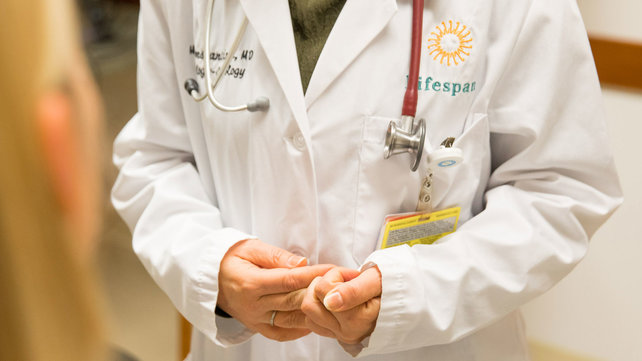Red Light Therapy: Benefits, Safety and Things to Know

Red light therapy is a unique way to treat certain medical conditions as an alternative or in addition to taking medications. It is easily accessible, safe, and may be covered under your insurance.
What is red light therapy?
Red light therapy, also called photobiomodulation, low-level laser therapy, or low-power laser therapy, works by having a continuous red light placed on a targeted area of skin, usually at a light wavelength between 630 – 700 nanometers. This stimulates the production of mitochondria, a main energy source in cells, to help promote cell growth and function.
What types of conditions can benefit from red light therapy?
Red light therapy can be used for a variety of conditions, often in combination with medications. Some of the most common conditions include skin conditions and pain management.
Skin conditions
Red light therapy is used for several different types of skin conditions. It is thought to help increase production of collagen which helps give skin its structure and elasticity, promote skin healing from increased blood flow, and reduce redness and irritation on the skin. Conditions that utilize red light therapy include:
- psoriasis
- acne
- wrinkles
- eczema
- hair loss
- minor wounds
- mouth sores caused by certain chemotherapy medications
Pain management
Red light therapy can also be used to help treat pain in combination with medications. Since it increases cell production by stimulating the mitochondria, it can help promote healing and reduce inflammation. It can also help release neurotransmitters such as endorphins, which are natural pain killers. Some pain conditions that utilize red light therapy include:
- muscle pain
- pain associated with chemotherapy medications
- joint pain
Other conditions
Red light therapy is also used for other conditions, such as weight loss and dementia. However, there is not as much evidence supporting its use for these specific conditions.
Is red light therapy safe?
Red light therapy is different from ultra-violet (UV) light, in that it does not usually cause permanent damage to the skin or increase risk of skin cancers. However, there are side effects of red light therapy that you should be aware of.
High levels of red light can cause redness, swelling, and blistering on the skin. Red light can also damage your eyes, so it is important to wear protective goggles when using red light therapy. If you have a history of skin or eye cancers, it is important to consult your oncologist or primary care physician before using red light therapy.
Where can you get red light therapy treatments?
You can get red light therapy at your doctor’s office, most commonly at your dermatologist, although other doctors may offer these services. Red light therapy is also available at other unique locations, such as spas, estheticians, and even yoga studios. You can also buy devices to use at home. It is important to check with your doctor or dermatologist prior to using red light therapy at home to make sure it is safe for you. Home devices are often not as strong or effective as devices that are used in doctors’ offices. If you plan to use red light therapy at home, it is important to check and make sure that the device has been reviewed and approved by the FDA.
There are several types of red light therapy devices. These include:
- Masks that fit over your entire face.
- Beds, similar to tanning beds.
- Panels of light that can be mounted on a wall or a table.
- Handheld therapy wand.
- Caps or helmets to place on the head.
How often should you use red light therapy?
The duration and frequency of red light therapy sessions vary depending on the condition being treated, but generally require several sessions over weeks or months.
How much does red light therapy cost?
Unfortunately, red light therapy is not usually covered under insurance. The cost of sessions vary between $25 - $200 per session depending on the area being treated. Home device prices also vary depending on the size and type of device, but typically range between $50 - $500.
For more tips on healthy living, visit the Be Well blog.
About the Author:
Kaitlin Leduc, PharmD
Kaitlin Leduc, PharmD, is completing a post-graduate year two (PGY-2) pharmacy residency in ambulatory care at Rhode Island Hospital.
Find a Doctor

The right provider is in our network
Search more than 1,200 providers in our network.



